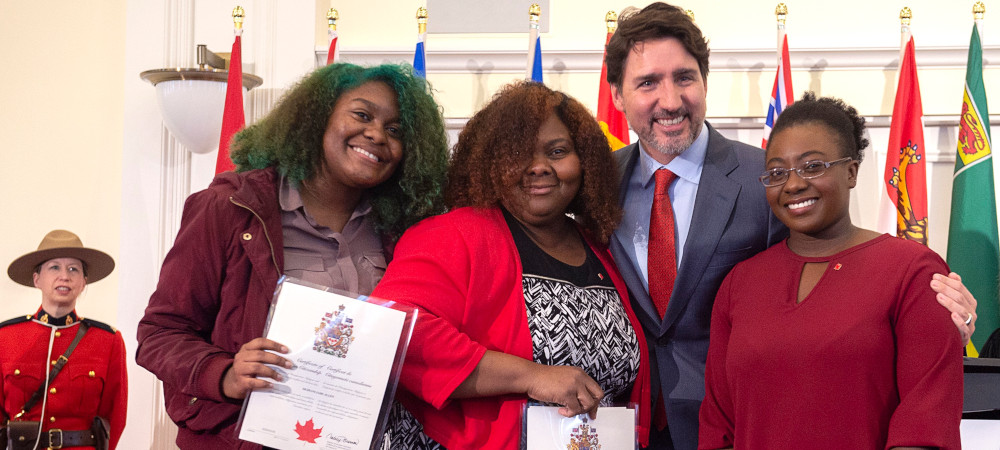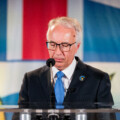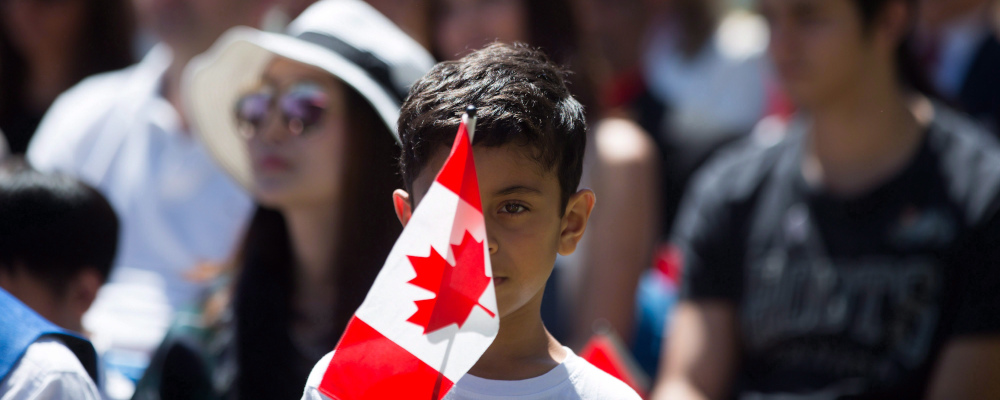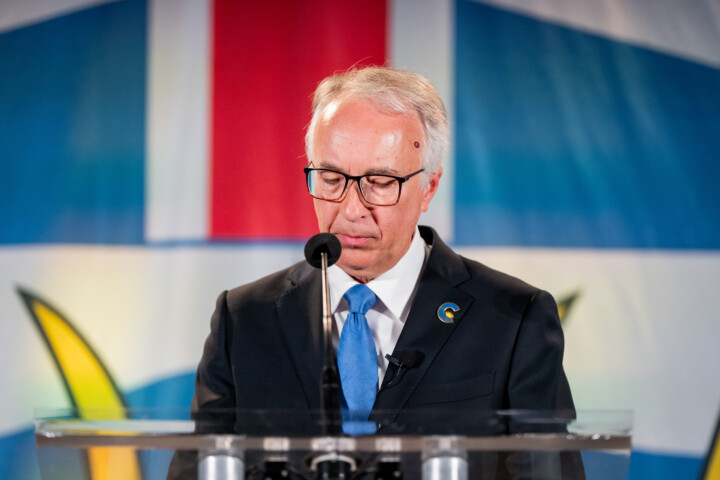One doesn’t have to look too hard to notice how easy it is for immigration to cause persistent political problems across social and economic lines. In Canada, this is most manifest in Quebec where policymakers have sought to strike a balance between the province’s economic needs with their Francophone cultural concerns. Remarkably, though, and nearly uniquely in the developed world, over the past several decades there has been a well-established consensus in English Canada around the value of immigration amongst policymakers and the public alike.
Where it was to be found, contestation remained relatively plain and technocratic. Most Anglophone political elites appear to agree that mass immigration is necessary for Canada to meet its economic needs. A common—if often quite chauvinistic—narrative around the country’s history of tolerance, diversity, and multiculturalism seems to have made explicit anti-immigration stances taboo. Public attitudes have maintained a pattern of modest increase towards ever-increasing support over the last few decades, reaching an all-time high as late as 2022.
But things are changing.
Immigration unhappiness is growing
Since late last year, recent survey findings continue to demonstrate that, while most respondents claim to remain broadly supportive of the contemporary immigration regime, overall support is declining. For instance, a 2023 Nanos poll found that 53 percent of Canadians want to accept fewer immigrants into Canada and 55 percent believe there are too many international students. A growing number of Canadians, it seems, now believe we have reached a tipping point where there is too much immigration for the population to properly integrate.

This increasing mood of uneasiness among the public has also been echoed by commentators. Many, for example, have argued that—despite the federal government’s plan to increase annual intake levels to 500,000 in 2025—existing numbers are already exacerbating economic pressures and overburdening public infrastructure, most noticeably when it comes to access to housing. Canada’s drastic increase and growing reliance on temporary workers and foreign student visas have also drawn particular criticism: while the latter struggle to find economic security, the former continues to be used as a substitute for Canadian labour. The numbers here are stark. Immigration is now responsible for 90 percent of Canada’s labour force growth, according to Immigration Refugees and Citizenship Canada’s (IRCC) 2022 Report on Immigration to Parliament.
While most Canadians focus on the economic consequences of the immigration status quo, many conservatives have also linked these discontents to a deeper state of cultural malaise: the breakdown of a deeper or binding sense of Canadian national identity alongside a delegitimization of history. This is not only responsible for the import of foreign political controversies into domestic politics, but also a lack of confidence in answering the question of exactly what it is that newcomers are becoming a part of.
Reform is needed
This much is clear: Canada’s contemporary immigration regime needs reform and, sensing the concerned public mood, the Liberal federal government has promised a range of new policies, including caps on foreign student visas and an eventual decline in intake numbers.
But it is yet to be determined whether Canada’s prior immigration consensus can survive these challenges intact. From one perspective, there are good reasons to believe that the decrease in public support of immigration is a short-term fluctuation of an otherwise steady secular trend. Comparative research into immigration attitudes demonstrates that support for immigration will often drop in response to two main factors: a spike in the number of immigrant intake, and a sociographic assessment of economic precarity and competition.
Seen this way, Canada follows a relatively conventional pattern, shaped by an initial backlash to a rising immigration rate that, assuming material conditions improve, will be eventually absorbed. This seems to have occurred in the midst of the 2008 financial crisis. While many Canadians believe that current immigration rates are too high, they still believe that mass immigration is an overall economic good.According to a recent Leger poll, 72 percent of Canadians still believe that immigrants play a key role in growing Canada’s population Similarly, while economic concerns are frequently cited, the number of Canadians that express a more rigid cultural discontent—that immigrants are “failing to culturally integrate”, for example—remains much smaller.
However, this overlooks the fact that, outside of Canada, the general challenges associated with cultural diversity, specifically but not entirely due to immigration, have themselves come to characterize political competition in most other Western democracies. It has more commonly emerged as a salient expression of both deep-seated cultural and material differences among the population, pitting well-educated, wealthy, urban cosmopolitans who support mass immigration against large segments of the working class who don’t.
What makes Canada any different? Many would claim that an aspect of the Canadian national identity, as determined by its historical challenges with diversity, makes the country uniquely supportive of immigration and multiculturalism. This is certainly echoed in elite-level discourse, as these challenges are always presented as a matter of means rather than ends. Other than marginal voices like the People’s Party of Canada, no one person or political movement in the country really challenges the overall value or principle of mass immigration.
But, while likely informing the cultural elite’s conception of the national identity, the claim that this then conditions Canadian public attitudes in any unique way has been repeatedly proven false. The portion of the population that consistently supports immigration and multiculturalism as a matter of principle is actually quite small and has not grown much in recent decades: no more than around a third of the population, and generally confined to those who are well-educated, wealthy, working in knowledge or cultural industries, and—increasingly—those who vote for the Liberal or New Democratic parties.
Instead, the remaining two-thirds of the population are what academics Randy Besco and Erin Tolley have aptly called “conditional multiculturalists.” They support immigration—and may even put their more cultural reservations aside—because they believe it to be in the country’s economic interest. Over the last few decades, support for immigration increased because more Canadians came to support current, but not increased, intake levels, indicating not so much an embrace of multiculturalism as a toleration of the status quo.
This widespread utilitarian support of multiculturalism is perhaps best supported by the fact that refugee policy, a far more altruistic expression of supposed Canadian values, has always been contentious. Unlike economic immigrants, Canadians commonly overestimate refugee intake numbers and express far more cultural anxieties about them.

Canadian immigration’s past and future
Just as important is the fact that the contemporary popular Canadian immigration consensus is incredibly recent. Despite the official declaration of multiculturalism in 1971 under Prime Minister Pierre Trudeau, the majority of Canadians opposed the government’s immigration intake levels until the mid-1990s. And rather than a gradual expansion of Canadian pluralism to include non-European newcomers, contemporary support emerged only after a very dramatic shift at the time.
The Canadian immigration consensus is no more than thirty years old; and, short of expressing a quasi-universal attitude, this abrupt shift shows that it was first and foremost the contingent product of elite persuasion. While it was the Liberal administration of Trudeau the elder that ushered in the fifth and contemporary wave of Canadian immigration, what mattered was the fact that their conservative opponents—as seen in both the Mulroney and Harper administrations—embraced that system, implementing further increases through a convincing case of its economic utility.
This was then maintained through the careful, but limited, management of a successful policy equilibrium. To put it another way, the Canadian immigration system actually worked and avoided many of the challenges faced by similar states. Given the emphasis on permanent residency, the very selective nature of the point system was successful in not only integrating newcomers but also promoting mutual economic benefits. Common reservations against immigration did not disappear but were instead undercut as a legitimate popular policy movement.
Today this equilibrium has unraveled, undermining the conventional orthodoxy that the economic utility of the program overrides cultural reservations. It has opened up a hole in which anti-immigration attitudes, long dormant, not only have room to express themselves but to grow as a politically feasible alternative. As we have seen in other advanced democracies, this is set to be driven by two broader developments that will allow it to grow, despite any economic recovery.
The first is that, even amid rising aggregate support for immigration, Canadian attitudes have become more polarized along partisan, regional, and class-based divides. While support is confined to the wealthy and well-educated, other groups of Canadians are becoming more skeptical. They are also being drawn to different parties: while the latter are much more likely to support the Liberals or New Democrats, those with more resistant attitudes are almost exclusively expressing support for the Conservative Party.
The second is the changing attitudes of new or minority Canadians. Historically, they have been among the most enthusiastic beneficiaries and supporters of high immigration, which, given their concentration within important vote-rich suburban ridings, has disincentivized parties from challenging immigration in the past. But new citizens also risk following broader public opinion and becoming more skeptical as they integrate. This is likely because while most Canadian immigrants once found quick and lasting economic security they are now much more likely to live in economic precarity and poverty.
All this is not to say that Canada’s more long-standing practice of immigration and multiculturalism will end. It will one day again find its footing, and it is likely to continue to expand with the support of a plurality, but not the majority, of Canadians. The fact, however, is that the widespread, three-decade consensus it has enjoyed is over.
While an insurgent right-wing party—an increase in PPC support, perhaps—is certainly possible, what matters now is the way in which the Conservative Party, as the existing repository of this sentiment, proceeds. Not only will immigration and multiculturalism increase as salient sources of intra-party contention, but the salience of the issue—due in part to Quebec’s continued insistence on cultural preservation—will make it impossible to avoid a clear stance. For the Conservatives that support continued (and possibly expanded) immigration, efforts need to be made to articulate and legitimize the value of the policy in its full economic and cultural dimensions. If the New Right has demonstrated anything, it is that a mere focus on economic utility is no longer enough for a compelling policy agenda.
Recommended for You

‘Overwhelmingly positive’: Hub Politics on how Canadians are feeling about the Carney-Smith energy alliance

The remarkable rise and spectacular fall of John Rustad, the B.C. premier who never was

Why Canada should follow in Ireland’s tax reform footsteps

There’s no end in sight for Canada’s housing crisis



